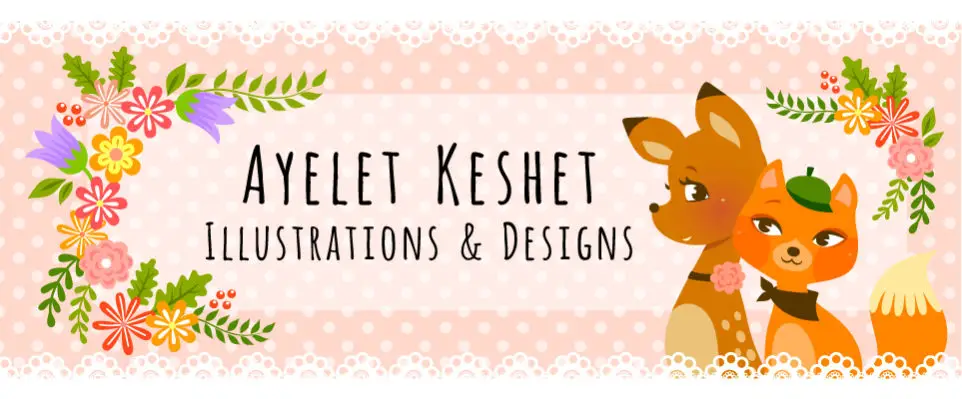Today I decided to play around with textures. While doing it I thought I would post a tutorial that shows how to create a textured illustration digitally.
Actually, there are many ways to create a textured illustration. I believe the ways vary according to the desired results and also according to different artists.
My tutorial is a rather simple, so if you are a beginner in digital drawing you might want to start with it before you move on to more advanced methods.
Also, just because I do something in a certain way doesn’t mean that it’s the best way or the most correct way! I’m sure there are many things I can do differently. There are many things that I don’t know, but I’m excited to learn them as I go!
How to create a textured illustration – my work progress
This image started with a quick sketch that I drew on paper while watching TV.
I scanned the sketch and transferred it to Illustrator. Then I set the blending mode of the sketch to “multiply”, locked it and placed a new layer under it for coloring.
Many dislike working with the pen tool, but I LOVE it. I drew most of the shapes in the image with the pen tool and only a few of them with the pencil tool. I could have done the same thing in Photoshop, but I’m very used to Illustrator and find it more convenient.
The sketch is only a vague indicator, as you can see. I use it only to get the basic idea and after that I continue without it. In Illustrator, each shape is an independent object that I can move around using the mouse, so it’s easy to change the positions of the elements.
once I was happy with the elements and the way they filled the page, I moved the image to Photoshop.
At first I exported the image to Photoshop with all of the editing options preserved, thinking i would add texture to each element separately. But eventually I realized that it’s not needed and the effect turns out well when I apply the textures on top of all the layers combined.
So, above my image I started adding up layers. I didn’t know in advance how many layers I will add, I just started with one and went on with it.
On each layer I drew with a brush that I created out of a pencil scribble.
There are many tutorials online for creating brushes out of scanned images, and that’s how I learnt to do it.
Then I adjusted the settings of the brush (shape dynamics, transfer, smoothing) to soften its edges and to make it flow more naturally.
I kept playing with the brush’s setting as I worked, checking how different results look on the different parts of the drawing. Most importantly, I changed the blending mode and the transparency of each texture layer.
On one of the layers I used my textured brush to add shadows. I zoomed in and painted carefully in areas that needed extra shadows. It helped defining the different elements and create more depth.

You can see that I ended up with quite a lot of layers…

To finish up, I added one last layer with a few white splatters, like a hint of sun stains. I used a brush that I created out of acrylic paint strokes, with adjustments to the “scattering” and “shape dynamic” settings. I set the layer’s blending mode to overlay and lowered the opacity to around 40%.
And my textured illustration is complete!
Here is a little GIF to demonstrate the progress:

What did you think? Have you tried these techniques yourself? Let me know if you have more tips and ideas about how to create a textured illustration digitally. I’m always willing to learn!











